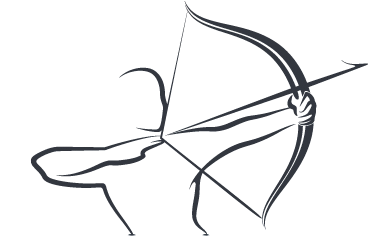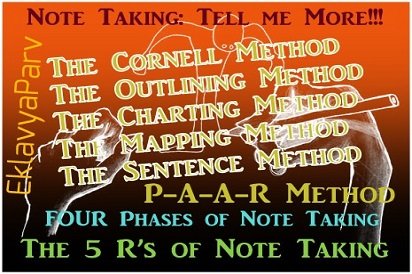Sometimes we may not assume in the beginning, how much possibility a topic of discussion carries with it; we realise it later when the collective knowledge reaches a level of acknowledgement. Then we find a lot to be written in notebooks and diaries. The urge to remember everything suddenly becomes stronger, and we need some smart ways at that moment to preserve that moment in notes.
This is what I have felt about note-taking. I was of the view that this topic can be explained in a single article, and readers will also be happy to conclude it. I have been thinking-reflecting-discussing-sharing and writing on this topic, and this comes as the last detailed post on it.
With the Significance, Difficulties, Types of Note-Takers, Essentials, Guidelines to take Good Notes, we discuss here the methods and ways to take notes. It should be remembered that in school and higher education classes, note-taking (in the well-remembered Rough Notebooks) remains a form of ‘academic poetry’. The student here is the poet, and the teacher acts as the motivation or the inspiration. The way you take notes is the way you think and give attention.
The objective is to reconstruct the lecture and make you feel in the presence of the professor again who gave the live lecture. Reciprocity remains between your dedication to taking notes and your liking for the professor/speaker.” ©EklavyaParv
- Let’s pledge to remember what happens IF We Don’t Take Notes:
- We tend to forget 50% of the content within the first 24 hours.
- 80% content is not retained after two weeks, to be precise, 14 days only.
- 95% of the total content we had listened to is out of our access in a month, and there is no way to recall it.
- Without Notes, we don’t remember the Speaker we had acknowledged as impressive and knowledgeable.
- We cannot share our understanding with others without proper documentation. It means you cannot be trusted by your friends when they miss the class and ask you to recap the lecture.
- You fail to ‘reduce your study time’ in future, as there are not notes that facilitate a ‘fast-easy recall’.
- We face Limited Resources in the absence of a recommended list of resources discussed in the lectures.
We should remember that the major problem for us is not that we don’t take notes; rather, we fail to ‘recapture’ and ‘review’ the content. We intend to make good notes, we do our best efforts and later on, we realise that our ‘mechanism’ has fallen short of creating skilled retention of the comprehended content.
General Techniques/Method of Note Taking
The FOUR Phases of Note Taking
- Preparatory Phase: This can be called the ‘Zero Hour’ of Note Taking. The note taker does not start taking notes here as the class has not started yet. It is just about setting the objective to take notes. The ‘willingness to take notes’ is what we term the First Phase of Note Taking. It is about inculcating the resolution of taking notes whenever you know that you owe it to the learning subject and the person.
- Before the Class: Ringing the First Bell of Note Taking! As we all get prior information about the lectures at schools and colleges, it serves to initiate the first stirrings of learning. A good note taker is always concerned with this phase. The Three Rules for this stage are:
- Review and revise notes from the previous session.
- Prior to reading the Assigned Subject Material, prepare questions to be asked or observed.
- Take a comfortable place to sit, preferably near the front, so that the speaker is audible and the writings on the board/slides are clear.
- Stationery resources should be ready.
- Identify the Chapter and make a note on the dedicated pages, mentioning the date and the speaker’s name.
- During the Class/Session/Lecture: The Activity Part! The first and foremost guideline here is to ‘Stay Focused’. One should participate in the deliberations and respect the speaker as a person. Keep a sharp eye to identify clues to important information. Use symbols, abbreviations, short forms, mapping techniques, etc., wherever possible and necessary. Highlight the point/information that has been stated as important by the speaker. Make abbreviations/short forms for commonly used words in your writing by writing the first few letters, and remember the consistency clause.
- The Final Phase- After the Class: Experts suggest that one should ‘Review, Revise or Edit’ the collected information. Do it as soon as possible after the class by filling the gaps, clarifying ideas, adding more details and asking the speaker, if needed. What is left for the note taker is the core of good note-taking.
We shall be discussing the 5 R’s in this article, which seems very much related to this phase. We must understand that there is a difference between ‘making notes’ and ‘writing the information is your own words’. For the latter to happen, we have to complete this phase. Do not hesitate to take assistance from your classmates, and feel free to take notes from their notebooks. One must be ready to rewrite the notes if needed.
The 5 R’s of Note Taking
Record: This is what we know as the purpose of note-taking. Information is collected and documented with suitable techniques and methods. The Note Taker attempts to capture everything important and makes use of all standard methods known. The recording does not have the ability to analyse the quality of the noted content. The prerogative remains with the ‘recorder’.
Reduce: To Condense: Make it Brief. I must make it clear that this stage is the ‘post-lecture’ stage. We finish note-taking in the class/lecture in the ‘Record’ segment itself. Now it is the task of decoding the notes. Reducing applies to the ‘complete lecture’ or the detailed, real content delivered to us. We read the notes taken and keep only those ideas and facts that create a ‘summary’ of the listened to contents. We read the notes and make a summary using keywords and important cues.
Recite: This is like ‘Reciting Poetry’. This term seems apt for Note-Taking when we find that ‘recitation’ is apt to the process of creating good notes. The meaning of Recite is: ‘Repeat aloud from memory’, and it is quite right about ‘Reciting the Notes taken’. The Note Taker recites all information in his own words, avoiding any dependency on the text or the notes. One has to be confident about the notes taken from the lecture, and it happens in the ‘Recite’ stage only.
Reflect: Look at the Mirror and Look into the Mirror! We accomplish a ‘double’. Reflection adds to the first presence. Think of your own ideas and opinions and record them in the decoding process. Make your observations a part of the ‘Make Fair Notes’ activity. As we denote the suggestive hints we had taken in the first step (Record) we must place our original ideas. We should raise questions on the noted points and put in all efforts to make our own notes/knowledge base. Still, we must remember that this intellectual activity must not kill learning.
Review: Class Notes lead us to the Library, and we expand our learning. The purpose of this ‘collective knowledge’ is to get good grades. The inherent knowledge expansion remains the basis, though. Review the whole content that you have prepared by recording, reducing, reciting and reflecting. Before you go to the texts to have more elaboration on the topic, it is recommended that you read the older notes. Sometimes, the knowledge is there in our mind, we have awareness, but we fail to relate it to the notes we have taken. Therefore, take 10-15 minutes to review your older notes before you step forward to read new materials. A Review Revives Your Learning!
P-A-R-R Method
Prepare-Abbreviate-Revise-Review
Prepare: Keep your eyes wide open, as learning can start at any moment. Collect information about the lecture and sit near the front, write down the main ideas as highlighted by the speaker through various mannerisms. Do not miss examples and note important details. Unfamiliar terms/words should be on priority so that you can seek clarification on them.
Abbreviate: Symbols and Abbreviations facilitate increased speed of writing and provide a condensed shape to notes. We know that we can generate information from these ‘tools’. Gaps can be avoided with the help of Abbreviations and Symbols.
Revise: As the cited researchers in this post have informed us that we forget 50% of the listened/read content we do not make notes. Revise notes within 24 hours while the information is fresh in your mind and give them an organised shape.
Review: This is like reading the minutes of the previous meeting before you go to the current meeting. Review your notes after the lecture as well as before the next lecture to enhance retention. We shall term ‘note taking’ as a successful activity when we can use this collected knowledge in multiple contexts and can co-relate it at various levels of explanations.
There are two more methods (We already use them) that I have in mind and can be discussed later for extended learning.
The T Chart Method
Two Column Method
Let us have a brief look (Further Readings from Web) at the Established Methods of Note Taking:
Note Taking Methods:
The Cornell Method
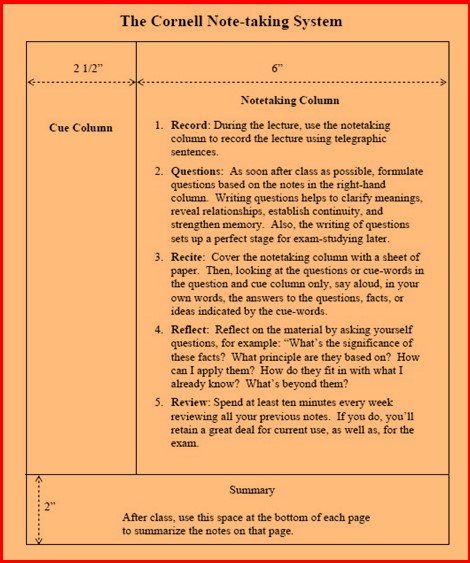
Another Representation of Cornell Method:

The Outlining Method
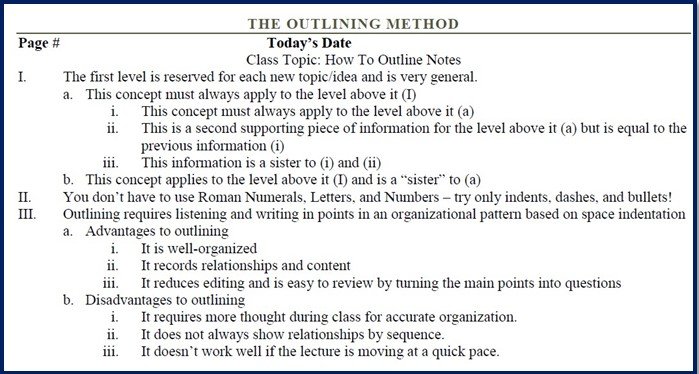
The Charting Method
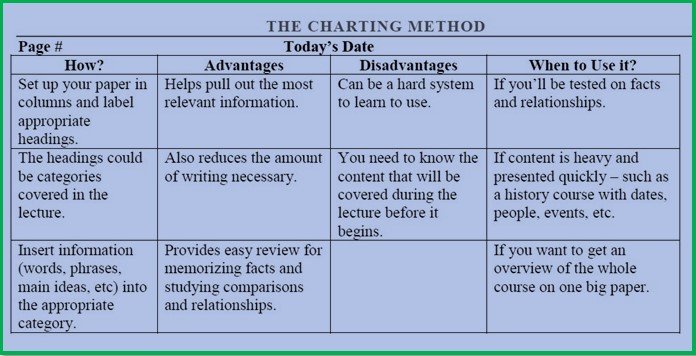
The Mapping Method

The Sentence Method

Note-taking remains a known art, though a Forgotten Skill! We can and we should be reviving it to life and make it an active part of our learning.
©EklavyaParv
